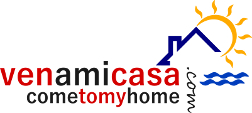ENRICHING, UNIQUE AND AWESOME EXPERIENCES IN SEVILLE
Since the establishment in 2003 of Venamicasa, the experience acquired over the years has led us to realize those activities that all students and teachers who visit Spain want to know. A selection of authentic cultural treasures some very popular, but most of them are genuine and different allowing the students to enjoy themselves while learning and reflect the daily life and customs that only the natives know.
Cultural activities and workshops Venamicasa offers are a selection of the best and most representative and genuine in the city of Seville.
| ACTIVITY/MONUMENT | DESCRIPTION |
|---|---|
| The Cathedral | It is the largest Gothic cathedral and the third-largest church in the world (15th and 16th centuries). World Heritage by Unesco. |
| La Giralda | Ancient "alminar" (minaret) of the Grand Moorish Mosque (12th century) was topped in 16th century bu a bell tower, the decreasing temples and the Giraldillo. |
| Patio de los Naranjos | Together with La Giralda is the only remains of the old main mosque of the city. It is the place where the Moslems carried out ablutions as an act of purification. |
| Real Alcazar | For a thousand years it has been a centre of power and a royal residence. Is a group of palaces and one of the best samples of Mudejar style. |
| Torre del Oro. Golden Tower | A defensive tower built in the 13th century was part of the ancient wall defending the city. It is now home to the Naval Museum. |
| Museum of Fine Arts | Is one of Spain's major centres for painting located in the old Merced convent. |
| Plaza de España | Built in 1929, its ground plan is semi-circular flanked by two towers.In the square are ceramic benches representing each of the Spanish provinces completed by a pond and a fountain in the centre. |
| The Island of Cartuja | Linked to the city by spectacular bridges, possesses leisure areas and cultural sites. |
| Casa de Pilatos | The Palacio de Medinaceli is one of the most respresentative of Seville. Built in the elegant Mudejar and renaissance styles of the 16th century. |
| Archivo de Indias | It was originally "Commodity Exchange" in the 16th century. Holds documents and cartography of the New World and it is centre for research on the History of the Americas. |
| Museum of Arts and Popular Custom | Contains a magnificent collection of glass work and artistic ceramics, as well as furnishings and utelensils from the different Andalusian districts. |
| Archaeological Museum | The many rooms of this museum hold Roman and Prehistoric sculptures and mosaics, as well as Moorish Art and tile work. |
| La Maestranza Bullring and Museum | One of the most famous in the history of bullfighting. Its construction was in 1761 and took more than a century to be completed. |
| The Town Hall | An interesting example of the plateresque style. One of its façace is unfinished because when the architect died, the sculptors didn't want to finish it. |
| Charity Hospital and Church | Representative Sevillian baroque building. |
| Museum of Carriages | A varied range of different carriage types according to the purpose of its use and its evolution through the time. Formative audio-visuals. |
EDUCATIVE, CULTURAL VISITS & WORKSHOPS IN SEVILLE
- Spanish Cooking Classes inside Triana Food Market.
- Free food Market Tours.
- How to make nice Tapas.
- Flamenco Museum. Essential for to know more about the Andalusian culture, to understand and experience flamenco dancing.
- Flamenco workshops in representative neighborhoods in Andalusia.
- Visit to a guitar factory.
- Sevillanas Courses.
- Visit bull ranches in Andalusia.
- Visits to educative centers in Seville.
- Tapas diner in typical and no touristic restaurants in typical and genuine non tourist restaurants that only the locals know.
- Visit the stables of Andalusian horses in Huelva.
- Cruises through the urban Guadalquivir River stretch by to get a panoramic view of the monuments near the river from a different point of view.
- Museo Casa de la Ciencia is the only place in the city which offers a programme dedicated to the spread of scientific and environmental knowledge. Building World Heritage.
- Planetarium at Casa de la Ciencia offers projections of Astronomy for different ages.
- The district of Santa Cruz. It forms part of what once the Sevilla Aljama or Jewish quarter. Peaceful plazas, narrow streets and houses or small mansions with patios give shape to one of the most typical and pleasant Sevillian settings.
- Triana. Was traditionally a neighborhood of sailors, workers, potters and industry, famous for its bullfighters, flamenco singers and dancers. Located on the banks of the River Guadalquivir keeps a rich folk culture of Seville from their origins, say there is a difference in character between Seville and Triana born in Seville born in any other part of the city.
- Triana Bridge. Inspired by the Parisian bridge Carrousel. The relevance of this beautiful bridge is attributed as the first permanent bridge in the city.
- Italica. It was the first foundation of Roman citizens located outside Italy. Roman theater and amphitheater. The birthplace of the emperors Trajano and Adriano.
- Visit to factories : The visits to factories that manufacture handicrafts and food products, as well as other factories or companies related to the studies of students.








